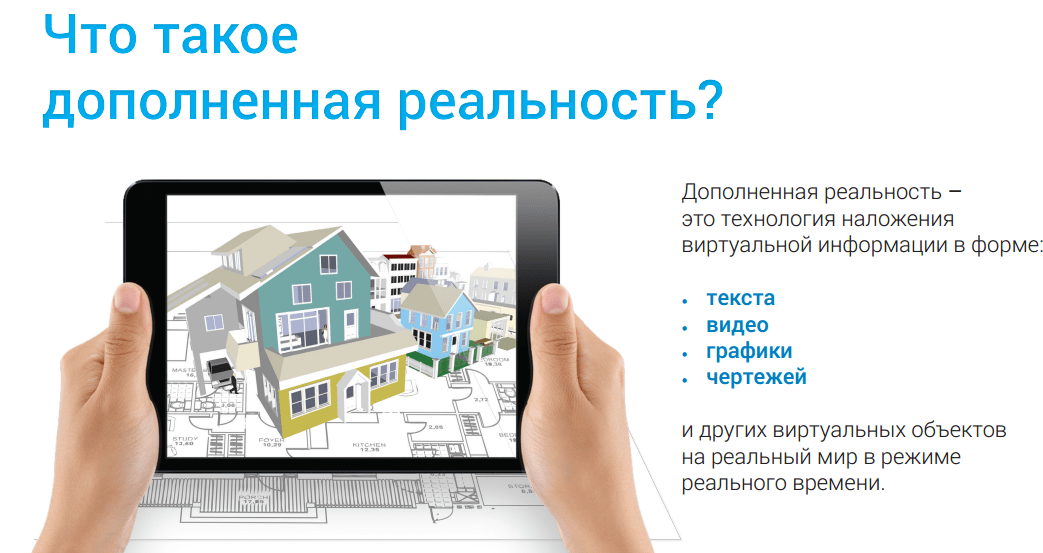
Augmented reality - a cocktail of the real with the virtual
Some old VR ideas plus new imaging techniques, lots of mobile technology advances and more? Optional ? exact satellite location or code download. We mix, we mix, and we have? Augmented reality? augmented reality.
What exactly is she? Briefly, this can be described as a slightly old, slightly new technique for connecting the real world with virtual objects. An integral element of modern augmented reality is the interaction of a person both with the real outside world and with a machine, because in AR the machine significantly affects the image of reality we perceive. Modifies it, supplements it with information from computer systems and databases, and in some cases, data on the history of interaction with a given object, place, fragment of reality. The interaction of both ours and other human network users.
A well-known example of augmented reality technology is Google glasses (Google Glass), introduced in the spring of 2012, as well as other inventions of this type, such as Smart Glasses from Vuzzix. The idea is to use translucent glasses to observe the life on the streets of the city, as well as the elements and objects generated by the computer and superimposed on the image of reality.
Glasses or, who knows, maybe in the future contact lenses or even implants that expand reality to human needs, are still more an announcement than a reality. The market premiere of Google glasses is scheduled for 2014. Currently, in addition to fairly serious applications in medicine or aviation, AR is most often encountered by users of portable devices, smartphones, tablets or game consoles.
Reality + Location + Virtual Objects = AR
As you can easily see, augmented reality is not a new technology, but rather the idea of combining several well-known techniques. The purpose of this connection is to provide the user with additional information and experience related to the place where he is or the object he is viewing. Another goal is to enable him to interact with virtual objects or other augmented reality recipients.
Let's see how this works in a typical tablet or phone device equipped with an application for rendering (i.e. presenting data in a form appropriate to the environment - in this case, visually) of virtual objects that complement the image perceived by the owner of the device (1) .
As you can see, the image that enters the camera lens is perceived by the augmented reality mechanism as a “solid body”. that is, a cell extending from the camera lens to the image surface of objects captured by the camera, in the form of a more or less truncated pyramid. This body must be populated with virtual objects derived from the recipient's location information from a database on network servers.
Solid furniture? information and creations from the database don't take long, but it can really take it if you have a poor mobile internet connection. Because it only depends on whether the reality of AR is in real time or its expansion is a gruelingly long process.
Created in this way, ?com? full of additional information, tags, images in some cases? recommendations or comments from other users of the application are shown on the display, where they are superimposed on the image from the camera, just like in google glasses, with the difference that in the Glass project we perceive reality without using the camera (2). We see the end result on a smartphone or tablet as an image filled with additional data in the form of, for example, colored data windows, as in an application designed specifically for people dealing with or interested in real estate in the city (3).
You will find the continuation of this article in the March issue of the magazine
IKEA catalog 2013 with augmented reality [GERMAN]